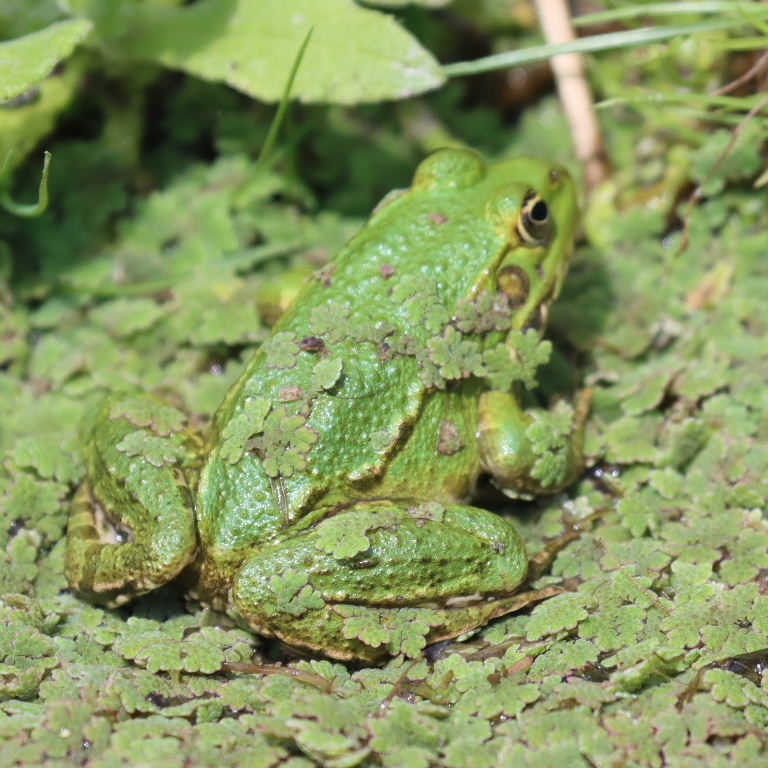Marsh Frog Rana/Pelophylax ridibunda



The Marsh Frog is one of three similar "green" frogs, two of which are not native to Britain.
It was introduced into Kent in the 1930s and is now present in other southeast counties and SW London.
(The other two are the Edible Frog - Rana/Pelophylax esculentus - and the Pool Frog
- Rana/Pelophylax lessonae, the latter was native and has been re-introduced into the east of the country.)
(Another, fortunately rare, feral introduced species is the larger, brown American Bullfrog - Rana/Lithobates catesbeianus.)
(Another, fortunately rare, feral introduced species is the larger, brown American Bullfrog - Rana/Lithobates catesbeianus.)



The three "green" species look similar but all are variable, with or without spots, pea-green to dark brown, and often with a light stripe centrally.
They can adjust their background colour to match their habitat. The central stripe breaks up the outline for camouflage.
(Male Marsh Frogs have black vocal sacs, Pool Frogs have white and Edible Frogs, a stable hybrid, have grey.)



The Marsh Frog is native to much of Eurasia. It is Europe's largest frog at some 12cm long. The underside is creamy white.



Its green wardrobe is excellent camouflage in duckweed.



Its mottled turquoise wardrobe matches the blue-green algae. The snout is rounder and eyes closer together than the
Common Frog.
 Surprisingly, the collective noun is an army of frogs. (Some use knot, but that is more usual for toads.)
Surprisingly, the collective noun is an army of frogs. (Some use knot, but that is more usual for toads.)
 Brown wardrobe.
Brown wardrobe.




